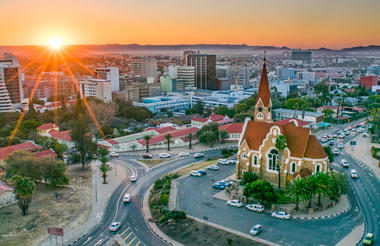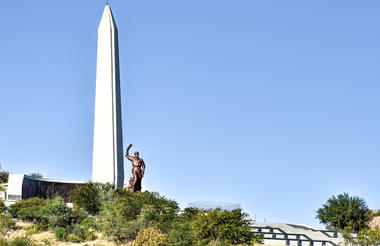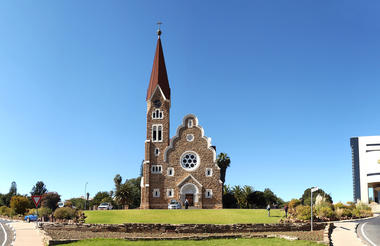The central Namibian highlands are much cooler and less harsh than the arid lowlands that make up the majority of the country. This is great cattle ranching country and most tourism facilities have their origins in cattle and more recently game ranching.
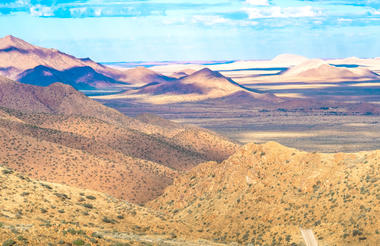
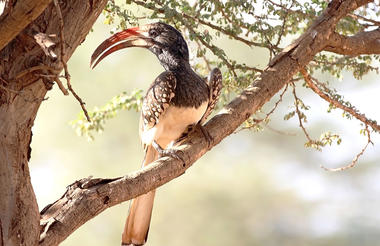

Carving out an epic rocky wonderland in the south of Namibia, the Fish River has created Africa’s largest and the world’s second largest canyon. Hot, dry and stony, the Fish River Canyon measures a whopping 160 kilometres in length, at times 27 kilometres in width and 550 metres in depth. The awe-inspiring natural beauty of this ancient geological marvel draws visitors from around the globe. For those looking for adventure, the intense 85 kilometre Fish River Hiking Trail through1.5 billion years of geological history will definitely thrill avid adventure enthusiasts, and for visitors looking to relax, head over to the canyon's southern end to enjoy a soak in the mineral waters of the renowned hot springs of Ai-Ais, or take in the spectacularly scenic views from Hobas Restcamp as well as numerous other viewpoints along its rim. Other popular activities include: scenic chartered flights, horse riding, nature drives and seasonal kayaking.



Sandwiched between the rugged and stark Atlantic Coast and the arid Namib Desert, the town of Luderitz is set in an incredibly unique geographical setting. This seaside town is something of an anomaly frozen in time – a piece of 19th-century Bavaria bordering the pinkish sand dunes of the Namib Desert. Lutheran churches, German bakeries, and colonial buildings boasting German art nouveau architecture are dotted about the settlement, while its windswept beaches are home to flamingos, ostriches, seals and penguins. The nearby ghost town of Kolmanskop, which has been taken over by the desert dunes, is one of the most fascinating area attractions, located approximately 10 kilometres from Luderitz central. Visitors can also take a trip to discover the wild desert-adapted horses located near the small town of Aus.
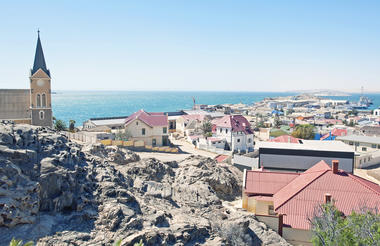
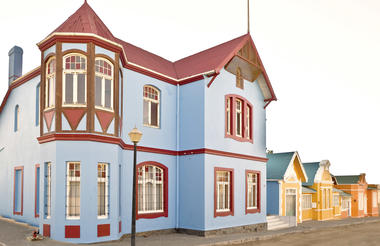
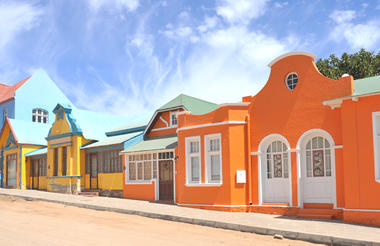
Situated in southwestern Namibia at the edge of the world-renowned Namib Desert, the Tiras Mountains provide the perfect backdrop for visitors who venture to this red granite wonderland and immerse themselves in the natural beauty of this region. Namibian landscapes are synonymous with tranquility, serenity and endless open spaces and the magnificent Tiras Mountains encapsulate this quiet charm. Nature lovers flock here for an off-the-beaten-track experience in one of Namibia's most beautiful areas. Visitors can enjoy thrilling 4X4 mountain and dune tours, nature walks, game and bird viewing as well as excursions through quiver tree forests and to ancient rock paintings on granite rocks. Visitors can relax at one of the luxurious farm lodges after a wonderful day of activities, or get up close with nature while camping in this beautiful desert wilderness.



As there is no accommodation at Sossusvlei, visitors to this desert wilderness are likely to end up staying at Sesriem, 65 kilometres away, where camps and lodges serve as a base from which to explore the dunes. Sesriem Canyon, a deep chasm carved through the rocks by water, is a striking natural feature of the area that is best explored on foot. Stony walls rise up sharply on both sides of the canyon, while birds roost in its crags and lizards dart along the ledges. The canyon’s name was coined when early settlers used it as a water source, using six lengths of leather (‘ses riem – six thongs) tied together to lower buckets into the water at the base of canyon.)
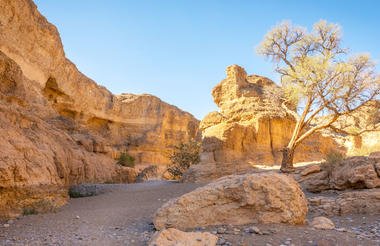
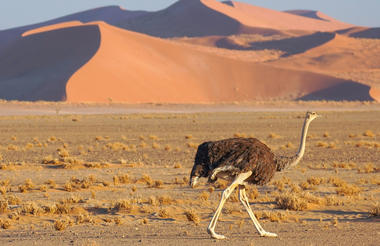
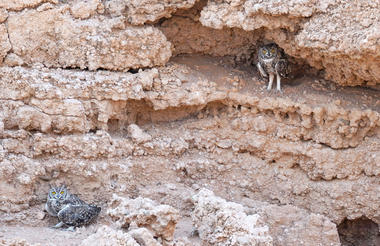
Set on the edge of the Swartrand escarpment and serving as a popular stopover for visitors travelling to Sossusvlei and the Duwisib Castle, the village of Maltahohe was established when the District Commissioner of 1899 decided that an outpost further west of the vast, Central Namibian district was required. Maltahohe is home to the oldest hotel in the country, equipped with its original bar and serves as an excellent base from which to explore the scenic surrounding area including a local farm 35 kilometres north of the town that has an 800-hectare shallow pan that, after flooding, is carpeted by a blanket of colourful lilies for about a week before they are devoured by elephant-nosed beetles. Visitors can also look forward to viewing the imposing Dutch Reformed Church in the heart of the village, watching a concert by the local Ama Buruxa choir group, and enjoy a hearty traditional meal. Maltahohe is the perfect spot to take a breather from the road and stock up on supplies before heading off again.



Founded in 1892 as the main harbour for German South West Africa, Swakopmund is often described as being more German than Germany. Now a seaside resort, Swakopmund is the capital of the Skeleton Coast tourism area and has plenty to keep visitors happy. The quirky mix of German and Namibian influences, colonial-era buildings and the cool sea breeze make it very popular.
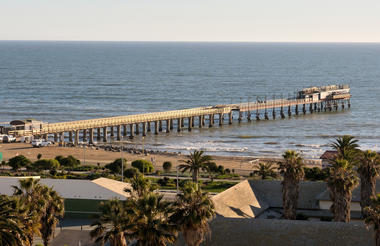
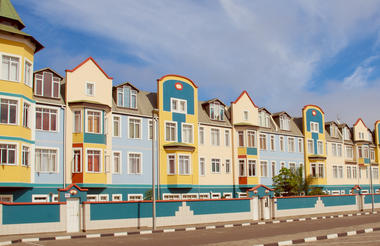
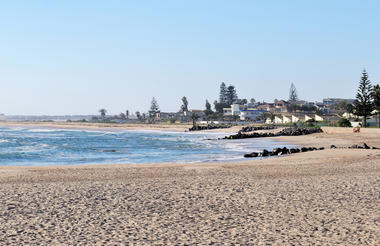
Windhoek is Namibia’s capital, home to an international airport and a plethora of restaurants, shops, entertainment venues and accommodation options. The city is clean, safe and well-organised, with a colonial legacy that is reflected in its many German eateries and shops, and the widespread use of the German language. Windhoek has an interesting mix of historical architecture and modern buildings, many of which are worth a look, including the Alte Feste (Old Fort), the 1896 Christuskirche (Christ Church), and the more contemporary Supreme Court.
